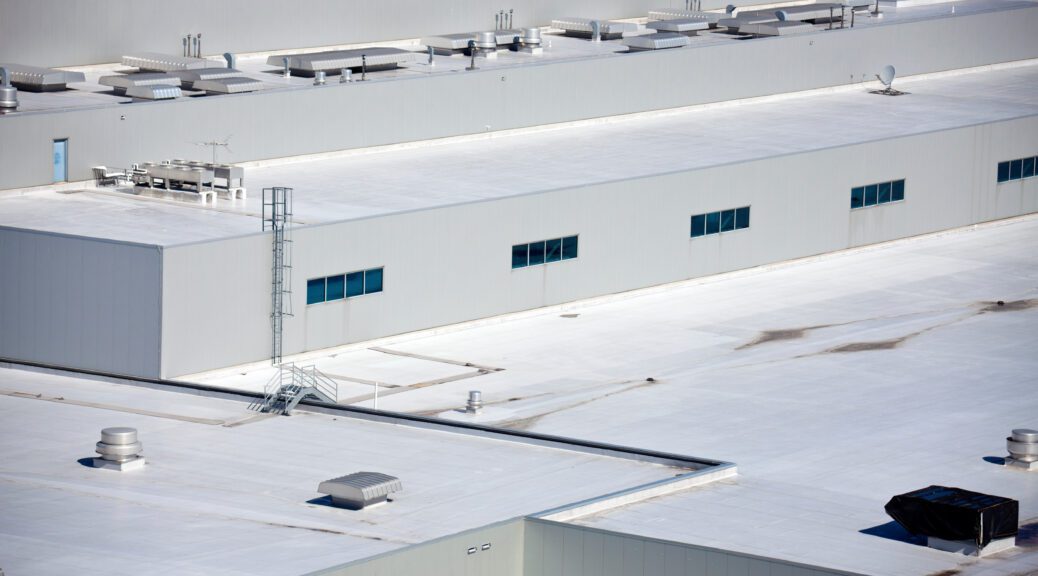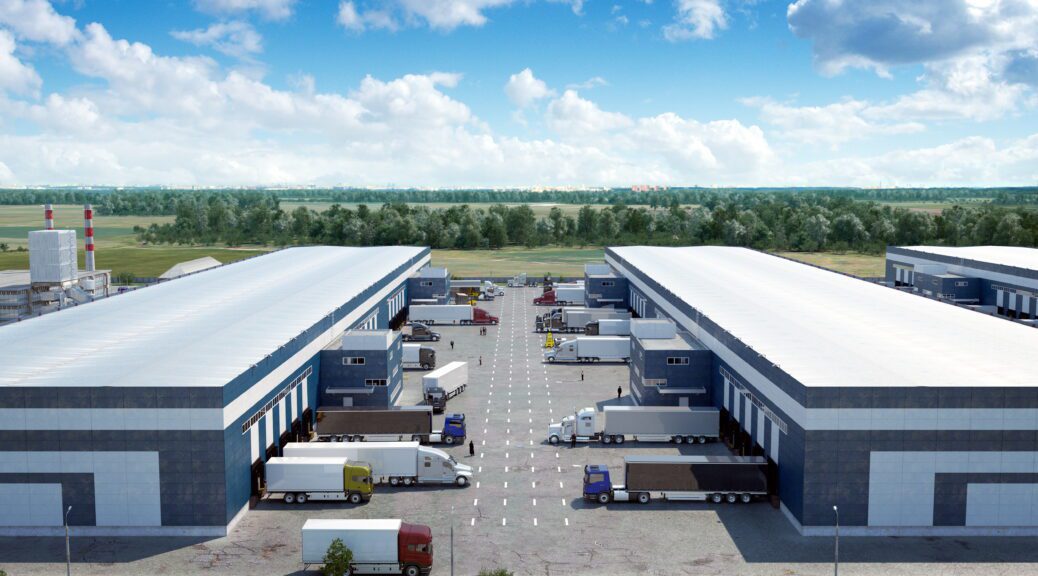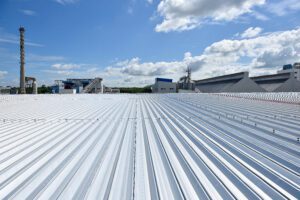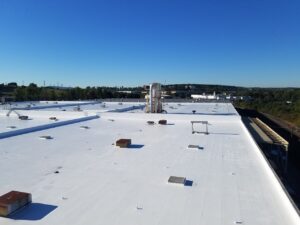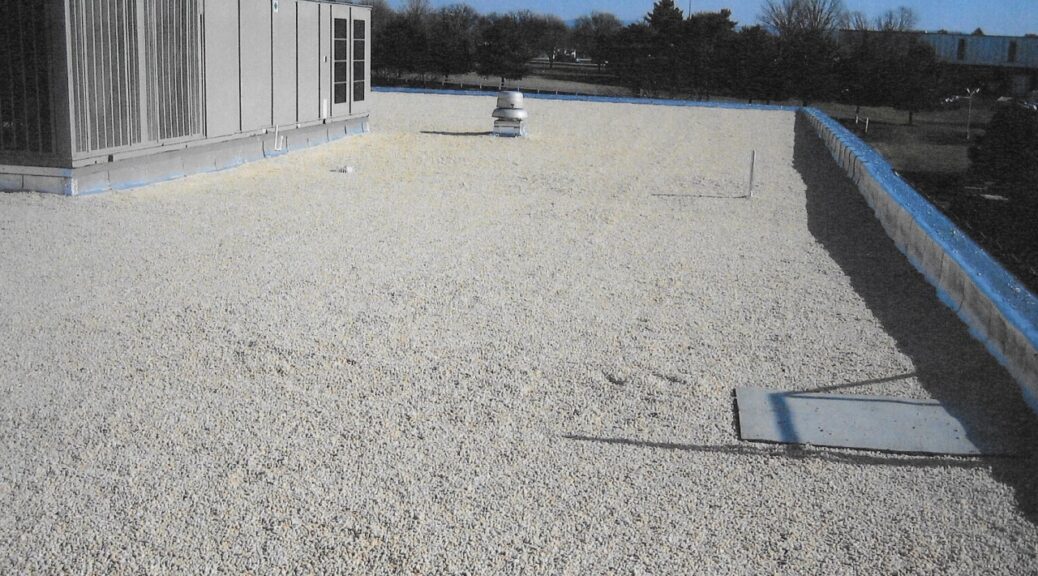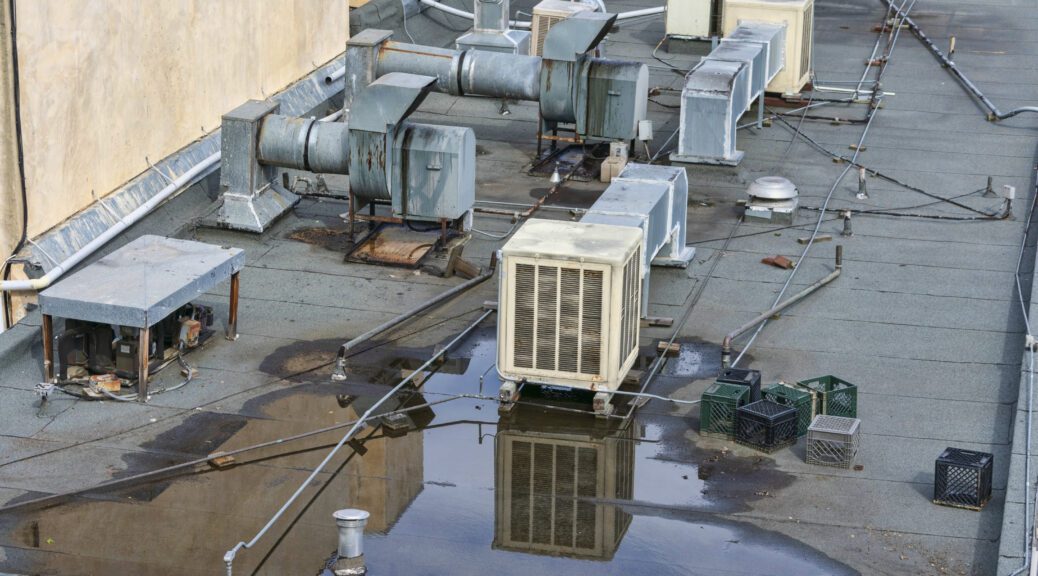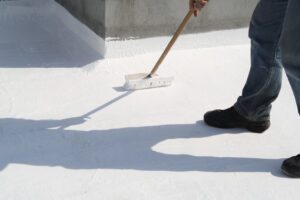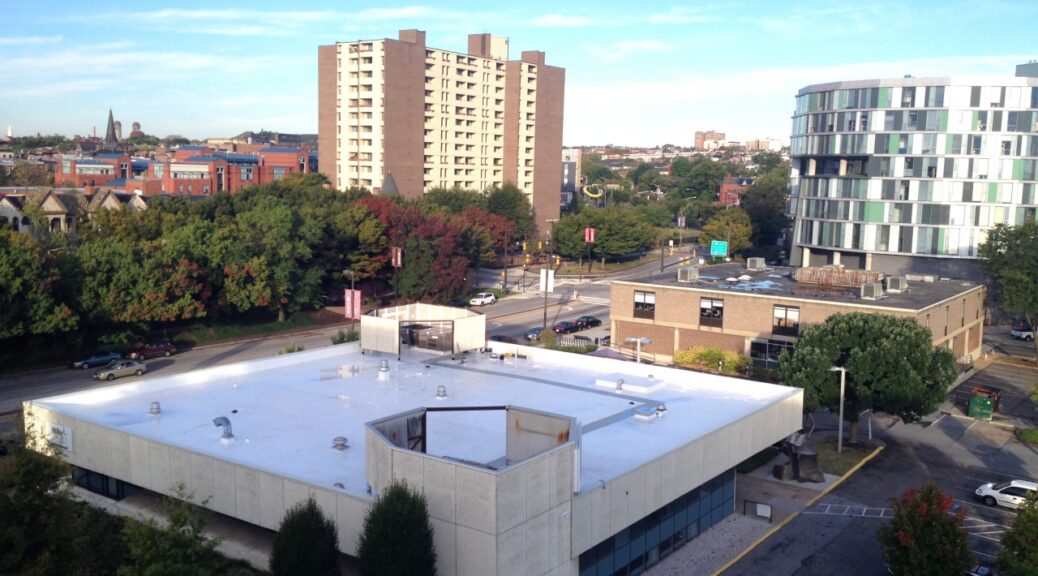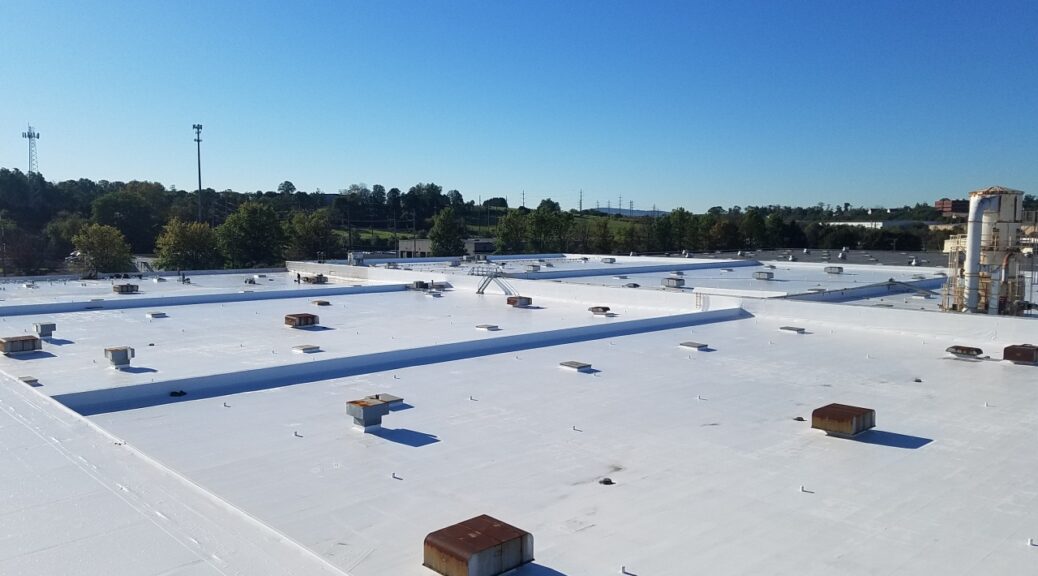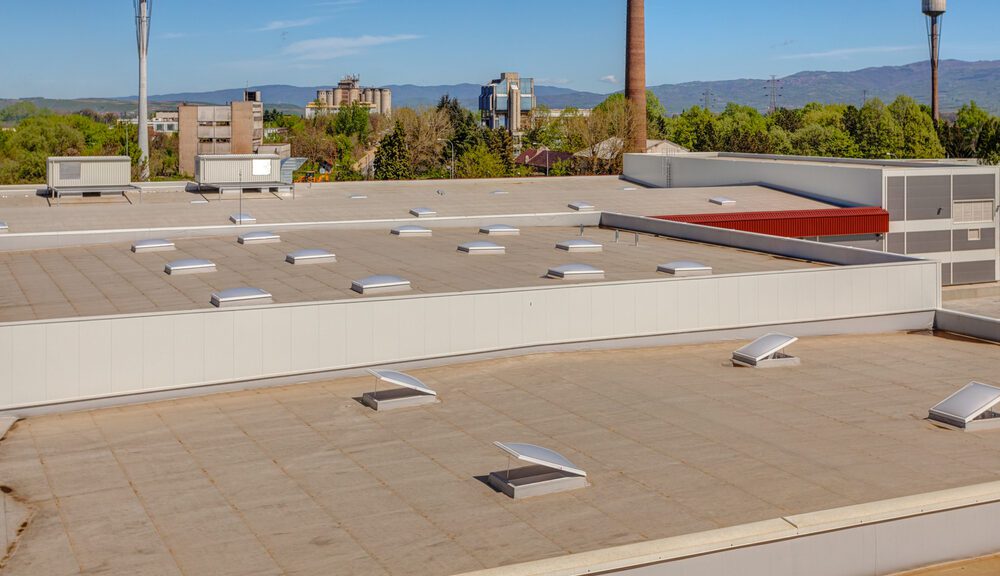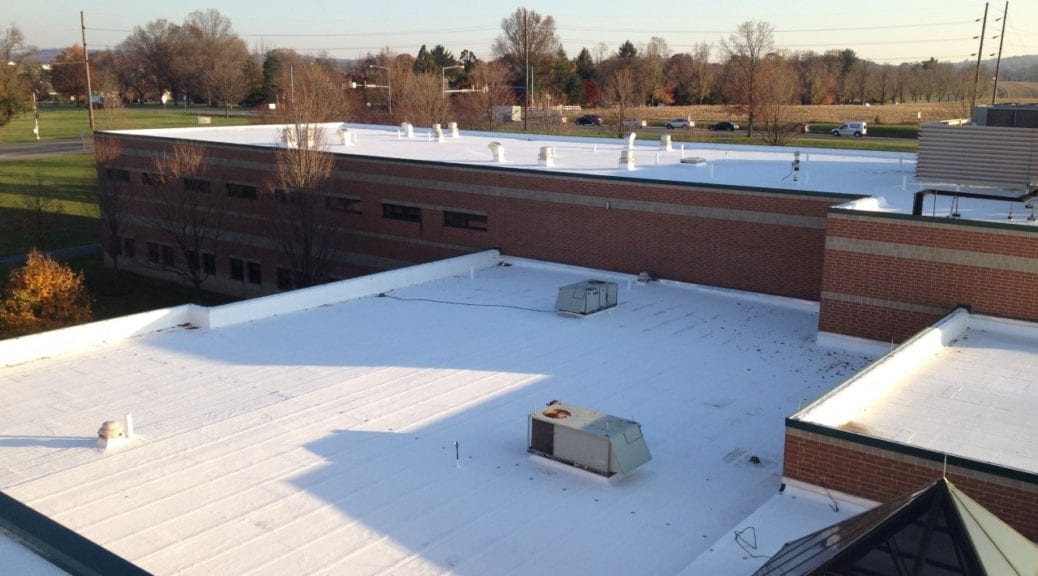Are you searching for ways to reduce energy costs and boost sustainability in your manufacturing facility? Look no further! The advantages of cool roofs for manufacturing facilities offer an exceptional solution to help you achieve your goals. With increasing energy demands and environmental concerns, installing a cool roof system can provide numerous benefits, such as improved energy efficiency, cost savings, and enhanced indoor comfort.
In this comprehensive guide, you’ll learn the ins and outs of cool roofs, how they can revolutionize your facility’s operations, and why Heidler Roofing is your best choice for commercial roof repairs and restoration in the Mid-Atlantic area. Don’t miss out on this opportunity to make a smart investment in your facility’s future. Schedule your roofing estimate with us today!
What Is a Cool Roof?
A cool roof is a roofing system designed with high solar reflectance—also known as albedo—and thermal emittance properties, reflecting more sunlight and emitting heat more efficiently than conventional roofs. Cool roofs help maintain lower temperatures on the roof surface by reducing heat transfer to the building below. The properties of cool roofs allow commercial buildings to stay up to 50 to 60 degrees Fahrenheit cooler than conventional materials during the hottest summer months.
These lower indoor temperatures from a new roof with cooling properties mean less strain on air conditioning units and a more comfortable work environment for manufacturing facilities. We specialize in installing cool roofs for manufacturing facilities in the Mid-Atlantic region. Our commitment to quality, service, and safety ensures you’ll receive the best roofing solution for your facility’s unique needs.
What Types of Roofs Are Considered Cool Roofs?
There are several types of cool roofs available for manufacturing facilities, including EPDM, TPO, PVC, and roof coatings. EPDM (ethylene propylene diene monomer) is a popular choice of commercial cool roofing materials due to its durability, energy efficiency, and resistance to weathering. TPO (thermoplastic polyolefin) and PVC (polyvinyl chloride) roofs offer similar benefits, with added advantages such as heat-welded seams for increased waterproofing and ease of maintenance.
Cool roof coatings, such as elastomeric and reflective coatings, can be applied to existing roofs to enhance their reflective properties and thermal emittance. These cool roof coatings not only improve the energy efficiency of your manufacturing facility but also extend the lifespan of your roof.
EPDM
EPDM is a highly durable synthetic rubber roofing membrane widely used in low-slope commercial and industrial buildings. It offers excellent resistance to weathering, ozone, and UV radiation, making it an ideal choice for long-term performance. EPDM roofs are available in both black and white colors, with the white version providing higher solar reflectance properties, thus contributing to a cooler roof. The installation methods for EPDM include fully adhered, mechanically fastened, or ballasted, allowing for flexibility in meeting specific project requirements.
TPO & PVC roofs
TPO and PVC are single-ply roofing membranes commonly used in many commercial buildings and industrial applications. They share several similarities, including their heat-welded seams, which create a strong, watertight bond for superior waterproofing. Both TPO and PVC are designed to be highly reflective, contributing to the energy efficiency of the building by reducing heat absorption. While TPO is known for its cost-effectiveness and flexibility, PVC stands out for its chemical resistance and durability, making it a popular choice for facilities exposed to harsh chemicals or extreme weather conditions.
Roof Coatings
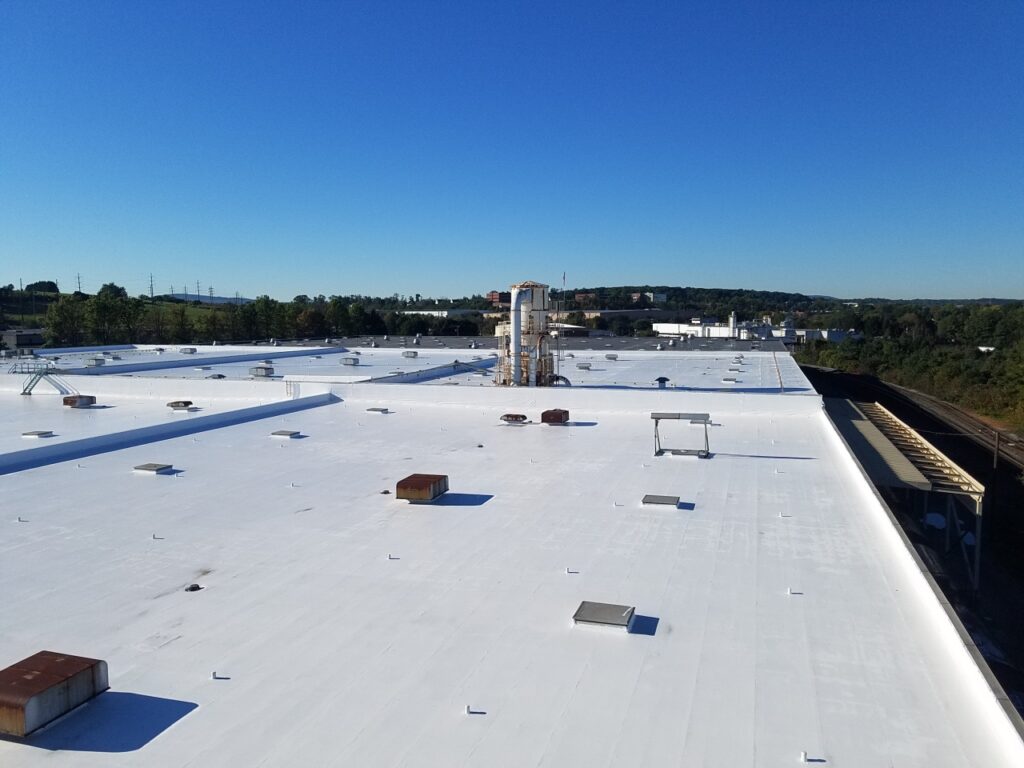
Roof coatings are an excellent way to enhance the performance of existing roofs and extend their lifespan. There are several types of cool roof coatings available for commercial and industrial applications:
- Elastomeric Coatings: These coatings are made from elastic materials like acrylic, silicone, or polyurethane, which create a seamless, waterproof membrane over the existing roof surface. Elastomeric coatings offer excellent solar reflectance and thermal emittance properties, helping to reduce roof temperatures and improve energy efficiency. They also provide added protection against leaks, ponding water, and damage from UV radiation.
- Reflective Coatings: Reflective coatings are designed specifically to increase the solar reflectance of existing roofs. These coatings are available in various materials, including acrylic, silicone, and aluminum, and can be applied to a wide range of roofing substrates. By reflecting more sunlight and emitting heat more efficiently, reflective coatings help maintain lower roof temperatures, reducing the need for air conditioning and resulting in energy savings.
What Are the Benefits of Cool Roofs?
So, what are the advantages of cool roofs for manufacturing facilities? Let’s dive deeper into each benefit so you can better understand the importance of choosing a cool roof. Rest assured, a building owner like you is making an intelligent investment in energy efficiency and cost savings, contributing to a more sustainable future for the planet.
1. Energy Efficiency
One of the biggest advantages of cool roofs for manufacturing facilities is energy efficiency. Cool roofs contribute to energy efficiency by reflecting more sunlight and emitting heat more effectively than conventional roofing materials. These properties reduce the amount of heat the roof absorbs, leading to lower surface temperatures and less heat transfer into the building.
As a result, the demand for air conditioning decreases, lowering overall energy consumption. By implementing a cool roof system in a manufacturing facility, you can optimize energy usage, ultimately resulting in reduced operating costs and a smaller carbon footprint.
2. Cost Savings
The energy-efficient nature of cool roofs directly translates into cost savings for manufacturing facilities. By reducing the need for air conditioning, cool roofs help lower energy bills, especially during peak demand periods when electricity prices are highest. Furthermore, cool roofs can extend the lifespan of your roofing system by protecting it from the damaging effects of UV radiation and thermal cycling.
This protection means fewer repairs and replacements, leading to long-term savings on maintenance and replacement costs. Overall, investing in a cool roof system is a smart financial move that can yield significant returns over time.
3. Improved Indoor Comfort

Another advantage of cool roofs for manufacturing facilities is the improved indoor comfort. Since these roofs absorb less heat, they help maintain lower indoor air temperatures, creating a more comfortable working environment for employees.
A more comfortable indoor temperature is especially important in facilities without air conditioning or areas where high temperatures can affect productivity and worker safety. By improving indoor comfort, cool roofs can increase employee satisfaction, better productivity, and a safer work environment.
4. Environmental Sustainability
Cool roofs are crucial in promoting environmental sustainability by reducing energy consumption and associated greenhouse gas emissions. By lowering the demand for air conditioning, cool roofs help decrease the burning of fossil fuels for electricity generation, resulting in fewer emissions of air pollutants and greenhouse gases like carbon dioxide (CO2) and nitrogen oxides (NOX).
Additionally, the widespread adoption of cool roofs in urban areas can mitigate the urban heat island effect, contributing to elevated temperatures and increased energy demands. This decrease leads to improved air quality, reduced smog formation, and a healthier environment for communities surrounding manufacturing facilities.
Let Us Help You Get These Advantages of Cool Roofs for Your Manufacturing Facility
The advantages of cool roofs for manufacturing facilities cannot be overstated. By investing in a cool roof system, you are making a smart, long-term decision that will not only improve energy efficiency and save on costs but also enhance indoor comfort and support environmental sustainability efforts.
Don’t let this opportunity pass you by! Partner with Heidler Roofing, the leading commercial roofing company in the Mid-Atlantic region and experience the benefits of cool roofs firsthand. Schedule your roofing estimate today and take the first step toward transforming your manufacturing facility for the better!
Resources:


